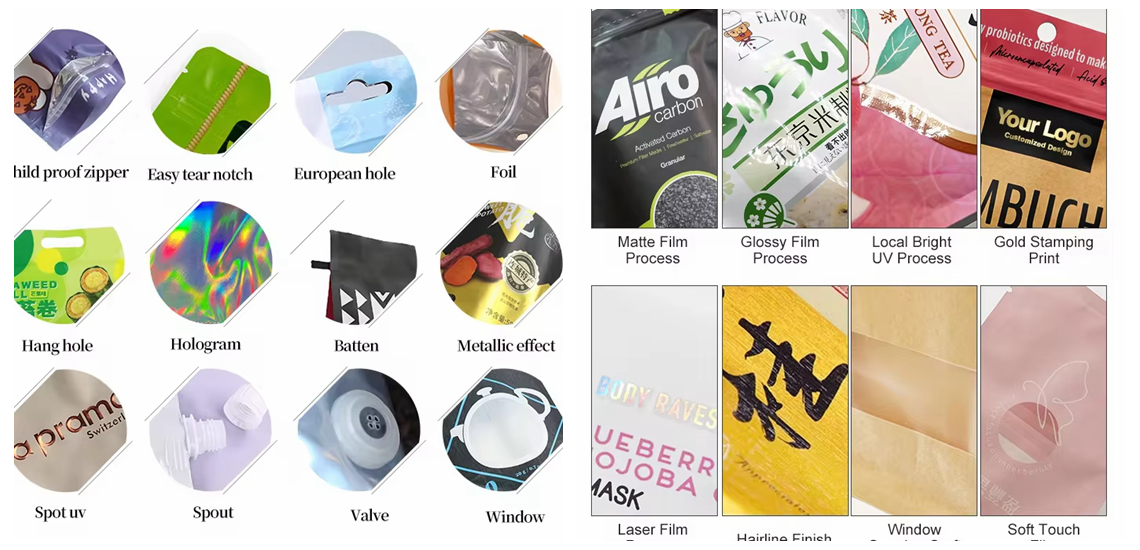Laminated packaging bags are made from multiple layers of different materials combined to take advantage of each layer's properties and meet specific packaging requirements.
Here are the common types of raw materials used in composite packaging bags and their characteristics.
Types of Raw Materials
Polyethylene (PE)
High-Density Polyethylene (HDPE) and Low-Density Polyethylene (LDPE): Provide excellent moisture and water resistance.
Polypropylene (PP)
Offers high transparency, good strength, and heat resistance.
Polyethylene Terephthalate (PET)
Provides high transparency and excellent gas and moisture barrier properties.
Polyamide (PA, Nylon)
Offers excellent mechanical strength, abrasion resistance, and good barrier properties.
Aluminum Foil
Provides outstanding gas, light, and moisture barrier properties, often used for packaging that requires high airtightness.
Polyvinyl Chloride (PVC)
Provides good transparency and chemical resistance but has seen reduced use due to environmental concerns.
Paper
As a natural material, it offers good printability and environmental benefits and is often combined with plastic films or aluminum foil.
Characteristics
Multi-Layer Structure
Composite packaging bags are made from multiple layers of materials, each contributing specific properties such as mechanical strength, barrier protection, and printability.
Excellent Barrier Properties
By selecting appropriate composite materials, these bags can effectively block gases, moisture, light, and odors, extending the shelf life of the product.
High Strength and Durability
The combination of composite materials gives the bags higher strength and durability, allowing them to withstand mechanical stresses during transportation and storage.
Lightweight
Despite being made of multiple layers, composite packaging bags are typically lightweight, making them easy to carry and transport.
Good Printability
The outer layer of composite materials is usually made from printable materials such as PET or paper, allowing for high-quality graphics and text printing, enhancing product appeal.
Flexibility and Customizability
Composite packaging bags can be customized according to specific needs, such as adjusting material thickness or adding functional layers (e.g., UV protection, anti-static), to meet different product packaging requirements.
Environmental Considerations
Modern composite packaging bags are increasingly designed with environmental performance in mind, such as using biodegradable or recyclable materials to reduce environmental impact.
By understanding the types of raw materials and characteristics of composite packaging bags, you can better choose suitable packaging materials to meet specific product needs, enhance product protection, and improve market competitiveness.

